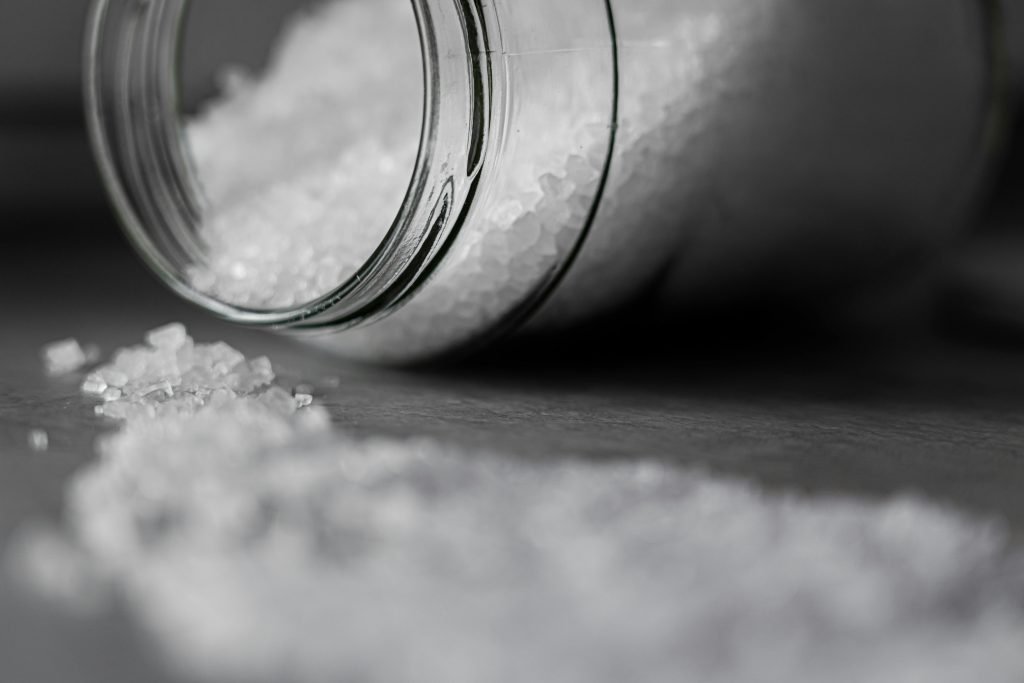Understanding POTS & the Role of Salt
Salt plays a critical role in maintaining blood volume and blood pressure—two key issues in POTS. This article explores how POTS and SALT are linked, and how salt can help regulate symptoms and why it should be part of a comprehensive POTS management plan.
Postural Orthostatic Tachycardia Syndrome (POTS) is a type of dysautonomia that primarily affects blood circulation. Individuals with POTS experience a significant increase in heart rate when standing, which can lead to symptoms such as dizziness, fatigue, brain fog, and palpitations. One of the most widely recommended and effective lifestyle modifications for managing POTS symptoms is increasing salt intake.
Why Salt Matters in POTS Management
Salt, or sodium chloride, helps the body retain water. For people with POTS, especially those with hypovolemia (low blood volume), increasing sodium can help expand blood volume, improve circulation, and reduce orthostatic intolerance.
Have you found L-carnitine helpful for your POTS?
By boosting blood volume, salt helps prevent the pooling of blood in the lower extremities that contributes to lightheadedness and rapid heart rate upon standing. This makes salt not just a dietary additive but a vital component of symptom control.
Recommended Salt Intake for POTS Patients
While the general population is advised to limit sodium intake to avoid high blood pressure, POTS patients often require the opposite. Experts suggest that individuals with POTS consume between 3,000 to 10,000 mg of sodium per day, depending on symptom severity and physician guidance.
To meet these levels, patients may be advised to:
- Add extra table salt to meals
- Use electrolyte tablets or powders
- Consume salty snacks like pretzels or pickles
- Drink broths or sports drinks with high sodium content
Always consult a healthcare provider before making significant dietary changes.
Best Sources of Dietary Salt
While table salt is the most straightforward option, there are numerous ways to increase sodium through both natural and supplemental means.
Natural Food Sources
- Dill pickles
- Olives
- Canned soups
- Cheese
- Salted nuts
Electrolyte Drinks and Supplements
Many electrolyte powders and beverages are designed with athletes in mind but work well for POTS patients. Look for options that include not only sodium, but also potassium and magnesium to help maintain electrolyte balance.

Balancing Salt with Hydration
Increasing salt without adequate water intake can actually worsen symptoms. Sodium needs water to expand plasma volume effectively. Therefore, salt and hydration go hand-in-hand in any POTS management plan.
Hydration Tips
- Drink 2 to 3 liters of water daily
- Spread fluid intake throughout the day
- Consider drinking a glass of water before getting out of bed in the morning
- Avoid caffeine and alcohol, which can dehydrate the body
Salt and Electrolyte Balance
Salt is essential, but it should be part of a balanced electrolyte strategy. Over-supplementing with salt alone can disrupt the balance of other electrolytes like potassium and magnesium, which are also important for nerve function and cardiovascular health.
A well-rounded electrolyte profile helps:
- Support muscle function
- Maintain nerve conduction
- Prevent dehydration
- Stabilize heart rhythm
Who Benefits Most from Salt Intake?
Not all POTS patients respond the same way to increased salt. Individuals who benefit most include those with:
- Hypovolemic POTS
- Low blood pressure
- Frequent episodes of dizziness or fainting
- Excessive sweating
Those with comorbid conditions like Ehlers-Danlos Syndrome (EDS) or Mast Cell Activation Syndrome (MCAS) often experience enhanced results from salt therapy.
Potential Side Effects of High Salt Intake
While salt can be a lifeline for POTS sufferers, excessive intake without medical supervision can lead to complications such as:
- Water retention
- Bloating
- Elevated blood pressure in salt-sensitive individuals
- Electrolyte imbalances
Monitoring symptoms and having regular check-ins with a healthcare provider is essential.
Salt-Loading Techniques
Salt-loading refers to strategically increasing salt intake at specific times of day to preempt symptoms.
Common Strategies:
- Taking 1/2 tsp salt with water before standing for extended periods
- Consuming salty snacks mid-morning and mid-afternoon
- Using salt capsules during travel or stressful events
These techniques can provide short-term relief and improve overall function, especially during symptom flares.
Integrating Salt into a Broader Treatment Plan
Salt intake is just one piece of the puzzle. An effective POTS treatment plan typically includes:
- Physical reconditioning
- Compression garments
- Medications (e.g., fludrocortisone, beta blockers)
- Nutritional support
- Lifestyle modifications like pacing and rest
Working with a knowledgeable healthcare team ensures all interventions are coordinated for best results.

GnarlyTree | PERSONAL STORIES WITH POTS
One of Those Days | Navigating Ehlers-Danlos Syndrome and POTS Bad Days
The Unseen Battle of a "Bad Day" Navigating Ehlers-Danlos Syndrome and POTS bad days means experiencing a spectrum of physical sensations, and some days are undeniably worse than others. While...
Frequently Asked Questions about POTS & Salt
How quickly does salt help with POTS symptoms?
Some individuals report noticeable improvements within hours of increased salt and fluid intake, especially if symptoms are tied to dehydration or low blood volume.
Can salt completely cure POTS?
No. Salt is a symptom management tool, not a cure. However, it can significantly improve quality of life when used properly.
Are there alternatives for people who dislike salty foods?
Yes. Salt tablets or electrolyte powders can be dissolved in water and flavored to taste.
Conclusion
Increasing salt intake is a widely recognized, low-cost, and effective method for managing POTS symptoms, particularly those related to blood volume and orthostatic intolerance. When combined with adequate hydration, physical activity, and a well-rounded care plan, salt can help stabilize symptoms and enhance daily functioning.
Always consult with a healthcare provider to tailor salt intake to your specific medical needs. With careful monitoring and a proactive approach, salt can be a powerful ally in the management of POTS.



